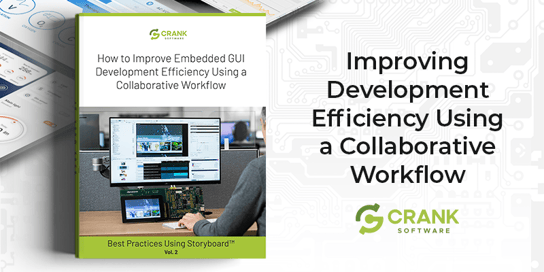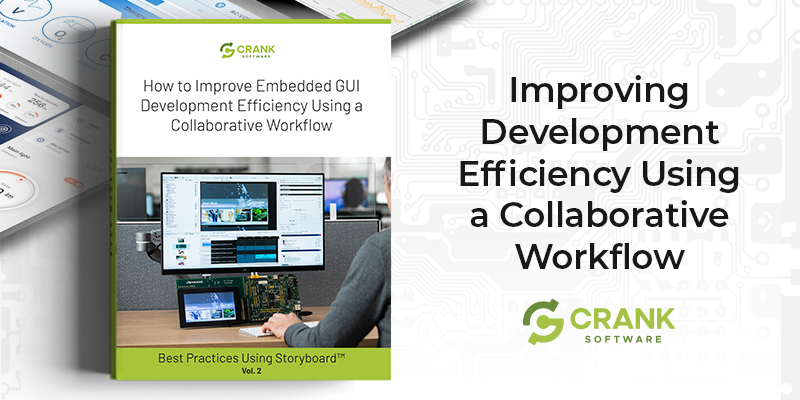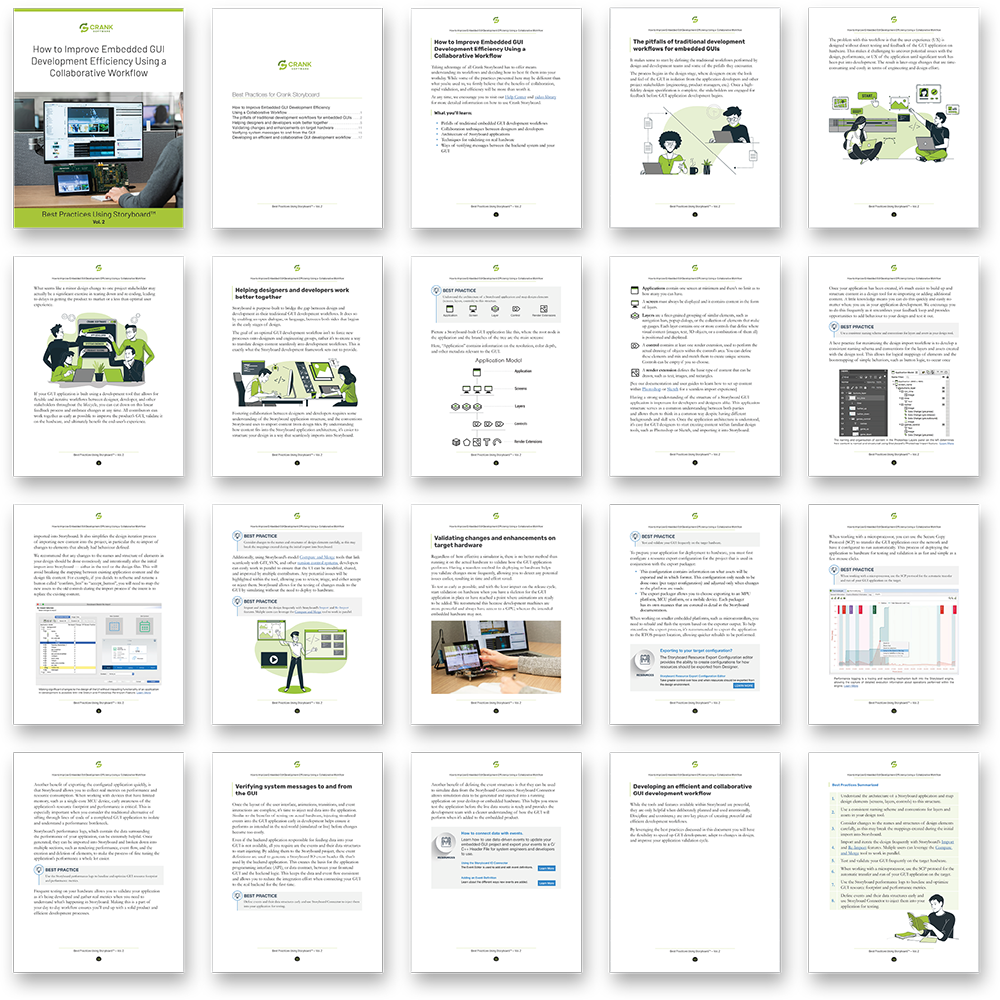
Most embedded systems companies invest heavily in software development, and spend a lot of time on optimizing their productivity. While software leaders can offer different ways to measure and improve development efficiency, such as velocity, bug fix rate, and number of pull requests, these typically focus on the developers themselves.
For embedded GUI teams, taking a broader lens to include the whole team is a must.
As the interplay between GUI design and development is key to achieving high-quality user experience (UX), it's critical to understand how these two roles can work better together and iterate faster. Few take the time to understand how design tools, such as Photoshop and Sketch, better integrate with development needs, such as robust application architectures, well-defined event handling, and rigorous testing. Even less adopt the tools and techniques necessary to align these different disciplines towards a common goal: Rapid delivery of amazing user experiences.
That’s why we’ve committed to ensuring that all development teams have the embedded GUI best practices necessary for effective collaboration (see them all here), and the knowledge that our customers use to streamline development efficiency.
In our downloadable white paper, Improving development efficiency using a collaborative workflow, our goal was to help you understand how UX designers and software developers could work more effectively together, taking advantage of software designed to help each discipline do more of what they’re good at, while removing the friction that typically exists within embedded development projects when changes to a project show up. This paper proposes embedded GUI best practices for optimal team collaboration, application architecture, and software testing, among other considerations, that enable the building of more successful, collaborative workflows.
Top 3 ways to improve embedded development efficiency
While some of the practices presented in this guide may be different than what you’re used to, we firmly believe that the collaborative tools, rapid design iteration, and testing features of the Storyboard embedded GUI framework will be more than worth it.
They include:
- Understanding the architecture of a Storyboard application and mapping design elements in Photoshop or Sketch (screens, layers, controls) to this structure
- Testing and validating your GUI frequently on the target hardware, using the tools described in the guide
- Defining events and their data structures early in the project and using Storyboard Connector to inject them into your application for testing
Once you’ve answered the questions presented in this guide, you’ll be in a better position to foster collaboration between designers and developers, and accelerate the development of higher-quality user experiences.
This is a glimpse into Crank's whitepaper, Improving development efficiency using a collaborative workflow, the second volume of our Best Practices for Storyboard series.
Continue reading the white paper by downloading it for free here or browse the entire series here.
.png?width=180&height=67&name=Crank-AMETEK-HZ-Rev%20(4).png)


